Most people think blogging is over, but if I had to choose one thing that’s going to make a comeback over the next 5-10 years, it’s blogging.
I started blogging over 10 years ago, and it’s one of the best moves I ever made. It not only allows me to express myself and learn to communicate better, but it’s also incubated every business I’ve ever built.

From nutrition to movement to consulting, blogging has been instrumental in moving my business from a side income to a multiple six-figure company I’ve used to fuel my adventures around the world.
If you want to start your next business, but aren’t sure where to begin, start with a blog and let your business ideas grow from there.
Here’s how:
%(tableofcontents)
Write About Things That Matter To You
When I first started blogging, I literally wrote about how scared I was to start a blog.
When you’re getting started, it almost doesn’t matter what you write as long as you start. The easiest way to start is to write about the things that matter to you. This is arbitrary, and you’re going to feel a little embarrassed. My first blog post above was literally about signing up for an indoor triathlon because that was something I wanted to do.

Sean Ogle is an entrepreneur, golfer, and traveler, but when he started his blog, he wrote about happy hours in Portland.
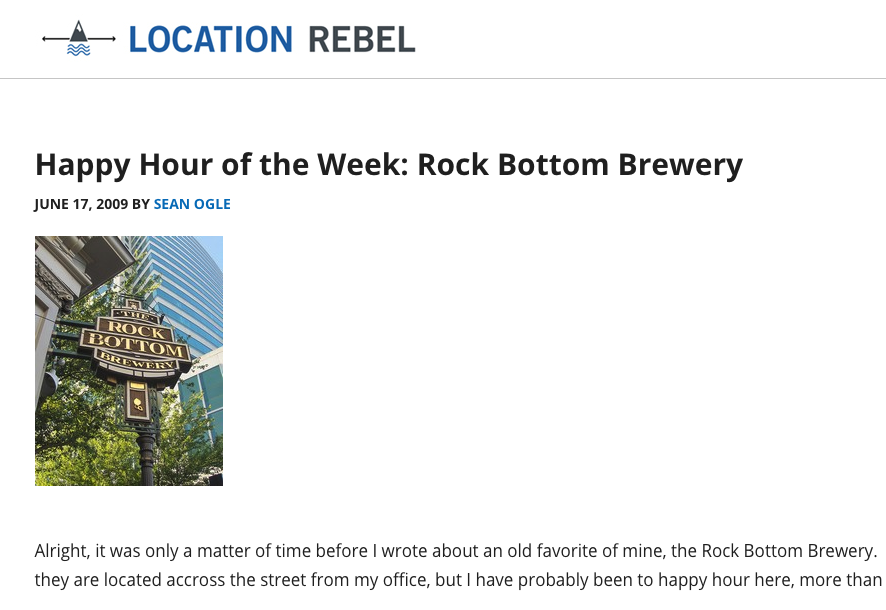
He was just a guy with a desk job trying to figure out this whole internet thing. Dozens of countries, a six-figure business, and a decade later, he’s now visiting the top 100 bars in the world on his cocktail blog.
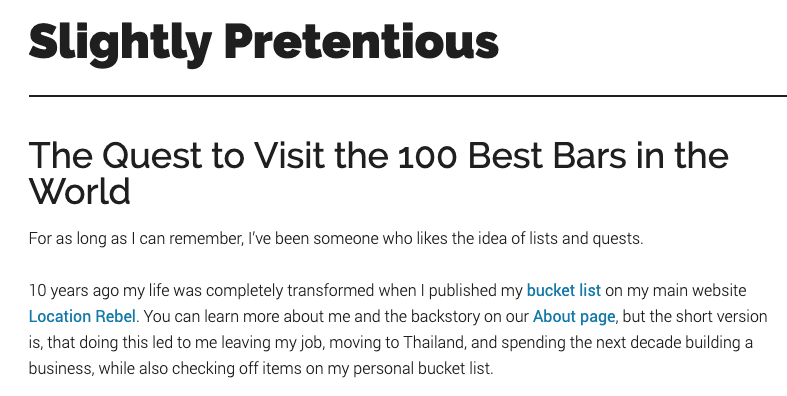
Chris Guillebeau, the author of the Art of Nonconformity and The $100 Startup, was already traveling the world when he started his blog. But even his early blogs were just about traveling. It wasn’t exactly clear that he would go on to write several books or start a podcast about side hustles. But he started, figured out what people were interested in and then doubled down on that.

Sometimes the things that interest you might make their way into your future business.
You can start by asking yourself:
- What do I learn about when I don’t have to do anything?
- What am I interested in? What am I curious about?
- What scares me? (this is my second favorite)
- What seems impossible? (my all-time favorite question)
Focus On Being Interesting
When I first started blogging, I saw all these bloggers talking about “85 ways to use Twitter” and all I could think was “this is so boring.”
So, instead of focusing on writing 86 ways to use twitter, I wrote about what was interesting to me (and use the blog as an excuse to do interesting things).
I made an impossible list of the things I wanted to do with my life and started documenting it. That was the first thing I did that garnered attention and helped me get traction as someone doing interesting things worth paying attention to.
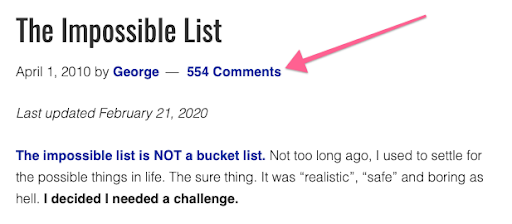
For me, this meant taking something I wanted to do in real life and writing about it. For the longest time, I referred to IMPOSSIBLE as an excuse to live an interesting life.
If you want to write something interesting, the easiest way is to do something interesting and then write about it.
The best part about this approach that even if things don’t work out like you might have imagined them — you’ll still have a fantastic story for the blog (and your life).
Try To Be As Helpful As Possible
As interesting as reading about your experiences may be, the best blog in the world won’t automatically print you money. The way you can turn that blog into a business is by being helpful.
Interesting is good for attention. Helpful is good for business.
Jason Fitzgerald at Strength Running gained credibility with his 2:39 marathon time (that’s super fast for those of you following along at home), but his business started booming when he helped fix people’s pain points — literally. His most popular posts are on rehabbing and preventing running injuries and training for specific races. Jason’s race times are great, but his how-tos are what pays his bills.
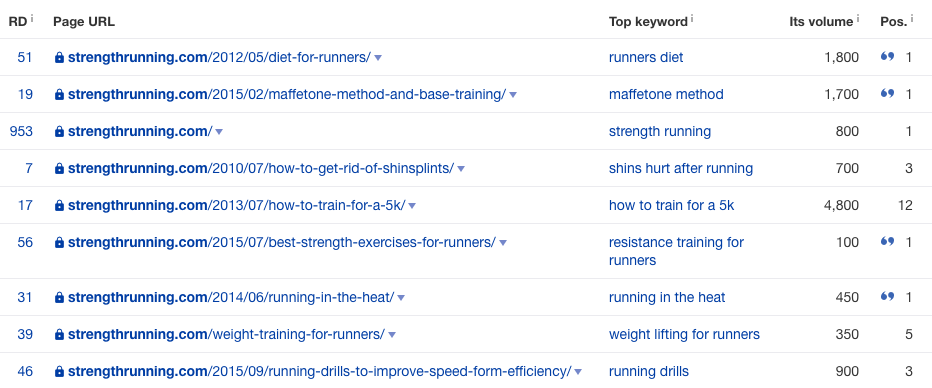
Chief Sumo Noah Kagan does a great job of leveraging his interestingness into helpful solutions for his audience. He does plenty of interesting things — and OkDork has been around since the beginning — but it’s spawned numerous businesses including Sumo, AppSumo, SendFox, and a lot more as he found ways to be helpful.
Just check out this blog post where Noah shares launching AppSumo:
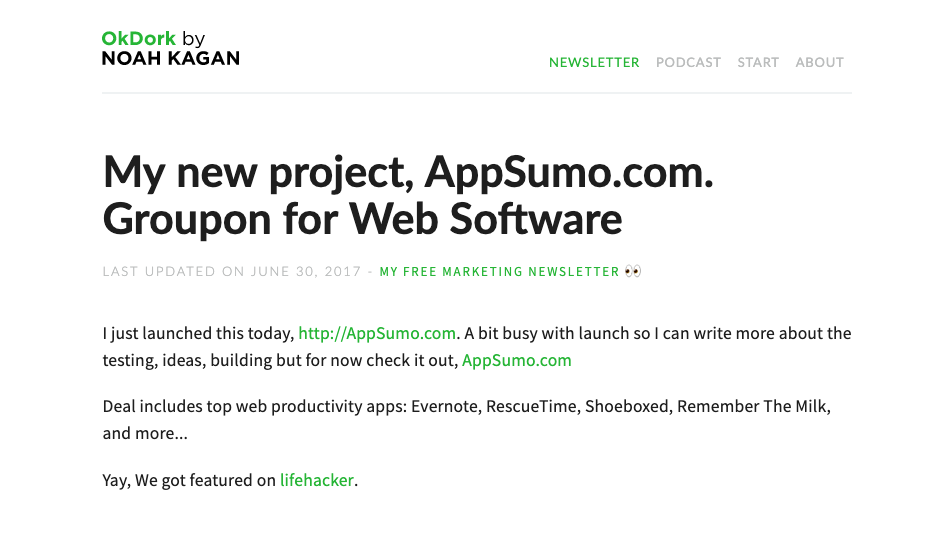
Your blog can be interesting, but if that’s all it is, it’ll stay a blog. The key to building something sustainable is to solve people’s problems, to fix something for them, or help them do something they’ll pay for. I’ll share more about that below.
If you’re interested in triathlons, don’t just tell your story. Help people train or find the gear they need.
If you’re interested in travel, instead of rehashing your trips, dig deeper into unknown territories and share stuff no one else is talking about.
If you’re not sure what would be useful, ASK! People will tell you if you ask them, and you will skip months of flailing around and wondering what people want.
Notice What People Respond To
I first launched our paleo resource website after mentioning the word “paleo” on page 20 of a fitness program PDF I sold. One thing on my impossible list was “get a six-pack and do a photoshoot." So I did it, and in the guide I mentioned I followed a paleo diet and used an intermittent-fasting schedule. Despite it being buried in a footer, I got a flood of emails after that. It went a little crazy. My inbox turned into a paleo FAQ message board!
I wasn’t having it. I bought a domain and listed all the questions on a page so I wouldn’t have to keep typing out the same answers (this is a great way to test out a site, by the way).
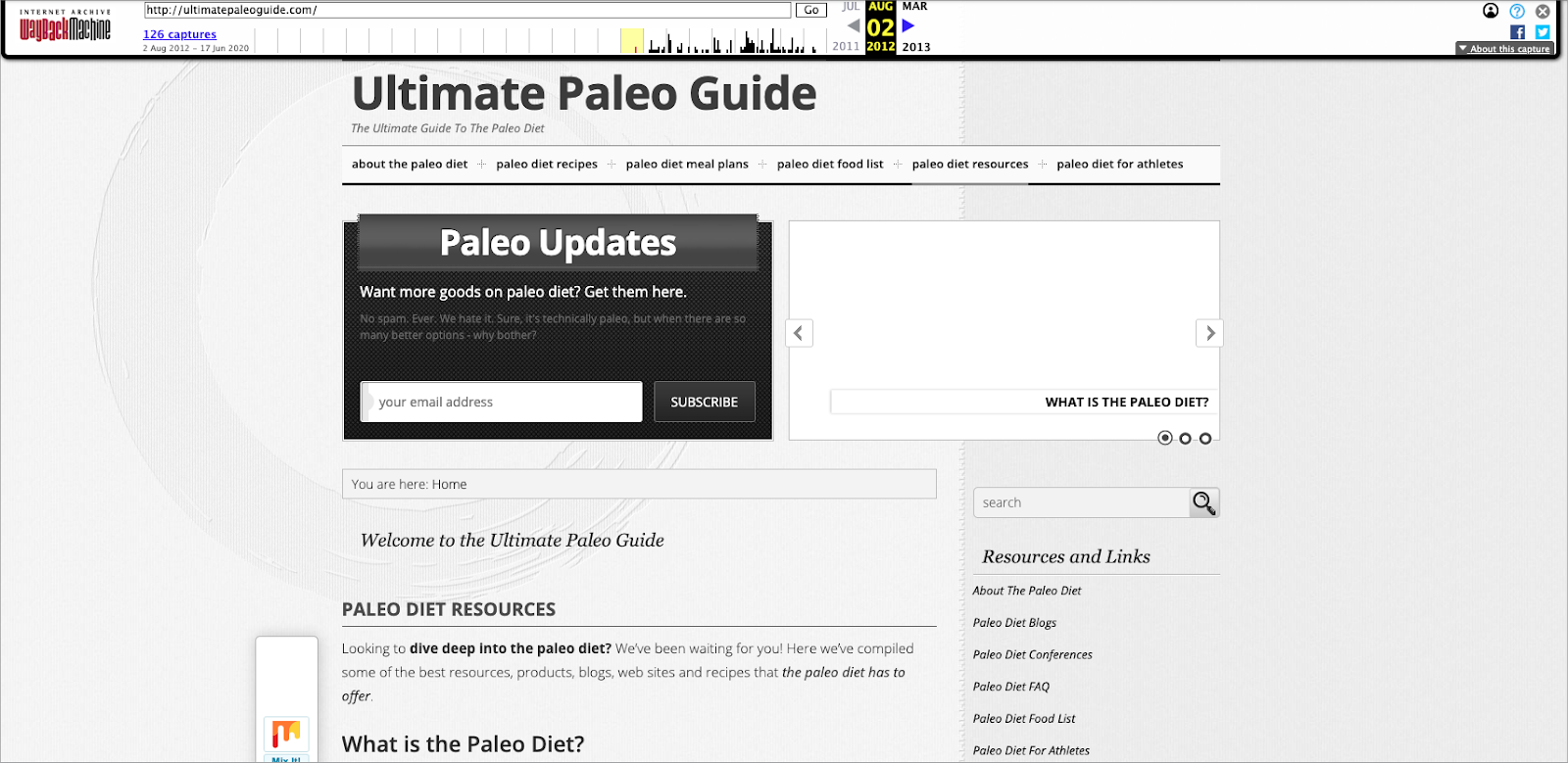
Our pages on paleo foods and paleo recipes began to rank well in Google, and we got more and more questions around those topics. We found people gravitated toward our food list app and then our meal planner. The business has expanded a software business to a business that now includes keto, AIP (Autoimmune Protocol), low carb, and banting diets, because we were listening to customers and taking their feedback.
As it turns out, once you have an audience, you don’t have to guess at what they’ll pay for. You can just ask them (or better yet, ask them for their credit card!). For us, we were overwhelmed with customer service requests about this item being paleo or that item being paleo and built a solution that not only cleaned up our customer service inbox, but also made us money!
Build The Easiest Solution To Their Problem
I’ll be honest. This is easy to screw up. When I built the MoveWell App — a 15-minute mobility coaching app that shows you what to do with a foam roller, our first MVP was simple. Then, we got a big head, and our 2.0 ended up going way out of scope and over budget. 🤦🏼♂️
We spent months building extra features and bells and whistles into the mobile app. These were super complicated and expensive to build. After we spent about $20,000 more than we budgeted for, it turned out customers didn’t even care about any of the stuff we had spent all that time and money on! They wanted one thing: content, and a lot more of it.
I’ve found this is common with software and apps. For our first version, we wanted to keep it simple, and we did. For version two, we tried to get fancy, and it bit us in the butt. Budgets ran over, and pretty soon we were spending about ten times what we did for the first version. All the while, all people wanted was more content (and we could shoot six months of content for 1/20th the price of all the new updates).
Not only was this easier to produce, but it was also faster to create! We could shoot six months of content for a few hundred bucks in a weekend — so we went back to the drawing board and focused on content creation.
This is not what you want to hear after spending $20k+ building out a new feature set that no one uses.
So we went back to basics, shooting more content, adding mobility routines, and paid extra attention to solving more straightforward questions like about stretching, posture correctors, or mewing.

Building big, sexy software is enticing, but sometimes not actually that profitable. Instead of spending a ton of money upfront, remember to keep your initial product simple — you want an MVP, you don’t have to build the final form right away. And if you’re going to take it to a 2.0 version, remember to still try to keep things simple while collecting more and more feedback.
Finally, actually listen to that feedback. My ego was telling us to build a bigger app — not our customers. We wanted it to do all this cool stuff, while the customers just wanted more content. This was probably one of the most expensive unforced errors I’ve made.
Benefits Beyond Your Business
Here you go with the five tips to create a business out of your blog.
Beyond supporting your business, a blog allows people to get to know you. I’ve worked with brands from Woven to SpotHero to LMNT because of the connections and authority I’ve built up from my blog — something I can’t formally evaluate and package up, but valuable nonetheless.
If you want to start a business, but you’re not sure where to start, start with a blog. It’s the easiest and fastest way to test things out, learn to express yourself, and explore what you’re interested in.
If you’re not sure where to start, I even created a business to help set up your blog for free. Who knows — it might even help incubate your next business!
Add A Comment
VIEW THE COMMENTS